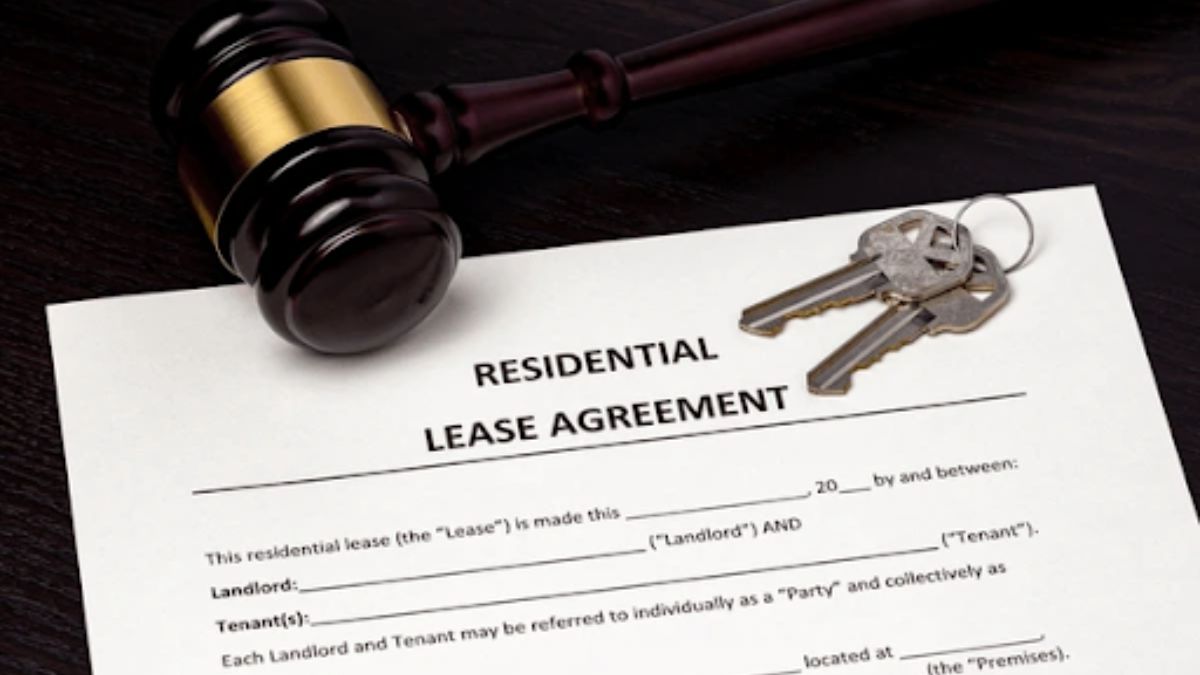TOPIC
What You Should Know Before Signing a Lease in Florida

Navigating the rental landscape in Florida requires a clear understanding of lease agreements, whether you’re a new or experienced tenant. Knowing the details of your lease can significantly impact your rental experience, from move-in to lease termination. A lease is a legal contract that outlines the terms of your rental, and understanding its contents can help you avoid potential issues, such as eviction or penalties.
What Is a Lease Agreement?
A lease agreement is a legally binding contract between a landlord and tenant in Florida. It specifies the terms and conditions of renting a property, including responsibilities for both parties, such as the rent amount, lease duration, security deposit, and maintenance obligations.
Before signing, it’s crucial for tenants to thoroughly review the lease to understand their rights and responsibilities, as well as any potential penalties or legal implications associated with the rental.
Important Considerations Before Signing a Lease
Before committing to a lease, tenants should evaluate several important factors that will affect their living situation, financial obligations, and the terms of the lease.
This evaluation should include:
- Rent amount and security deposit requirements
- Notice periods for lease termination or renewal
- Any fees or penalties associated with the lease
- Procedures for ending or renewing the lease
Understanding these key elements ensures you are fully aware of your rights and obligations before signing.
Rent and Security Deposit
The rent and security deposit are crucial financial components of any lease agreement. The security deposit, typically equivalent to one month’s rent, covers potential damages or unpaid rent. Understanding the legal limits on these charges in Florida is essential to avoid unexpected issues.
In Florida:
- The security deposit is usually capped at one or two months’ rent.
- Landlords must deposit the security funds in a separate trust account and notify tenants of the account details within 30 days.
- The deposit must be returned within 15 days of lease termination, unless justified deductions are made for damages.
Being aware of these regulations helps tenants avoid penalties and ensure a smoother rental process.
Lease Term and Renewal Options
The lease term defines the length of time the rental agreement is valid. Leases can be fixed-term (e.g., one year) or month-to-month, offering different benefits depending on your needs.
For tenants:
- Month-to-month leases offer flexibility but may come with higher rent upon renewal.
- Fixed-term leases provide more stability for both parties.
Make sure you understand the lease duration and renewal process to ensure a stable living situation and avoid penalties for breaking the lease.
Utilities and Maintenance Responsibilities
Understanding who is responsible for utilities and property maintenance is essential for avoiding misunderstandings.
- Landlords are typically responsible for maintaining the property and complying with housing codes.
- Tenants are usually responsible for paying utilities and keeping the property in good condition.
Clearly defined responsibilities in the lease agreement help avoid disputes and ensure that both parties fulfill their obligations. Tenants should also report maintenance issues promptly to avoid further complications.
Pet Policies
Pet policies can vary significantly between landlords. Some may allow pets with additional fees or deposits, while others may prohibit them entirely. It’s essential to review the pet policy before signing the lease to avoid penalties or potential eviction.
Key considerations include:
- Pet deposits and monthly fees
- Breed and size restrictions
- Specific conditions for keeping pets
Clarifying these details with the landlord helps ensure compliance with the lease terms.
Subletting and Roommate Policies
Many leases require landlord approval before a tenant can sublet or add a roommate. Failing to follow these terms can lead to eviction or legal complications. Understanding these policies helps tenants navigate living arrangements and maintain good relations with their landlord.
When considering subletting or adding a roommate, tenants should:
- Review the lease for clauses related to subletting and roommates.
- Communicate with the landlord and document all agreements.
- Be aware of any additional fees for new residents.
Parking and Guest Policies
Parking and guest policies are typically outlined in the lease to avoid confusion. These policies can include designated parking areas, fees, and rules regarding guest stays.
Ensure you’re aware of:
- Designated parking spaces and related fees
- Guest stay limitations
Clear communication with your landlord about these policies can prevent misunderstandings and potential charges.
Noise and Nuisance Policies
Noise policies are often included in lease agreements to ensure a peaceful living environment. Most leases specify quiet hours and restrictions on loud activities.
Typical rules include:
- Quiet hours, usually from 10 PM to 7 AM
- Restrictions on loud music or late-night gatherings
Familiarity with these policies helps maintain good relationships with neighbors and avoid disputes.
Early Termination and Lease Break Clauses
If you need to break your lease early, it’s important to understand the terms for early termination. These clauses typically outline the notice period, possible penalties, and any documentation required, such as job relocation letters or medical records.
Common scenarios for early termination include:
- Job relocation
- Medical emergencies
- Family changes
Review the lease’s early termination clause carefully to avoid unnecessary penalties and ensure compliance.
Insurance Requirements
Many leases require tenants to obtain renters insurance to protect their personal property and provide liability coverage. Renters insurance safeguards against theft, fire, and accidents on the property.
Tenants should:
- Understand the insurance requirements outlined in the lease.
- Maintain active renters insurance throughout the lease term.
Failing to comply with these requirements can lead to financial loss or eviction.
Understanding Your Rights and Responsibilities as a Tenant
In Florida, tenants have specific rights, including the right to a habitable living space, privacy, and protection from unlawful eviction. It’s essential for tenants to understand their rights under Florida’s landlord-tenant laws to ensure a smooth rental experience.
Key rights include:
- The right to privacy, with proper notice before the landlord enters the property.
- The right to a habitable living environment, including safe plumbing, electricity, and heating.
- The right to request repairs and withhold rent if necessary.
Familiarizing yourself with these rights helps protect you from unfair treatment and ensures a positive rental experience.
Conclusion: Finding the Right Lease Agreement for You
Choosing the right lease is crucial for ensuring a smooth living experience. By thoroughly reviewing lease terms, understanding your rights and responsibilities, and complying with local laws, tenants can avoid common pitfalls and foster a positive relationship with their landlord.
Whether you’re signing a new lease or renewing an existing one, being informed about key elements like maintenance responsibilities, renewal terms, and insurance requirements ensures that you’re making the best decision for your living situation. Consulting with a real estate agent or legal professional can also provide valuable insights and help secure favorable lease terms.
TOPIC
What Pet Psychics Can Reveal About Your Animal Companion

Pets are more than just animals—they’re family. They comfort us in difficult times, share in our joys, and often seem to sense our moods better than some humans. But what if there was a way to truly understand what your pet is thinking or feeling? That’s where pet psychics come in.
Pet psychics use their intuitive abilities to connect with animals on an energetic level, helping to bridge the communication gap between humans and their animal companions. Whether you’re concerned about behavioral issues, seeking comfort after a loss, or simply curious about your pet’s thoughts, a session with a pet psychic can offer profound insight and emotional clarity.
Understanding Their Emotions
Like humans, pets experience a wide range of emotions. They can feel joy, anxiety, grief, confusion, and even frustration—but unlike humans, they don’t have the language to express these feelings. Pet psychics tap into an animal’s energy field to interpret their emotional state and understand what might be triggering certain behaviors.
For example, if your dog suddenly becomes withdrawn or your cat starts acting aggressively, it may not be a simple training issue. It could be a response to a change in their environment, a physical discomfort, or even a reflection of emotional energy they’re picking up from their human family members. A pet psychic can help uncover these root causes, allowing you to better care for your animal friend both physically and emotionally.
Pet readings are also especially valuable for adopted or rescued animals whose histories are unknown. By connecting with your pet’s energy, a psychic may reveal past experiences that help explain present-day behavior—and offer guidance on how to help your companion feel safe and loved.
Messages From Your Pet
One of the most heartwarming aspects of working with a pet psychic is receiving direct messages from your animal. These messages may come through as emotions, images, sensations, or even specific phrases interpreted by the psychic. Whether it’s a living pet or one who has passed on, hearing a message of love, reassurance, or gratitude can bring deep emotional healing and a renewed bond.
Many people turn to psychic phone readings for immediate access to gifted psychics who specialize in animal communication. These sessions can be incredibly moving—shedding light on your pet’s needs, their role in your life, and the unspoken ways they support you.
And because every pet and situation is different, California Psychics offers a wide range of psychic readings online, allowing you to find a reader who aligns with your intentions—whether that’s understanding behavior, connecting with a lost pet, or receiving a message from a beloved companion on the other side.
Final Thoughts
Animals have a lot to say—they just need the right translator. Pet psychics offer a unique opportunity to connect with your animal companion on a deeper, more intuitive level. Through energy reading and emotional insight, you can better understand their needs, support their well-being, and strengthen the lifelong bond you share. Whether through psychic phone readings or personalized psychic readings online, your pet’s voice is waiting to be heard.
TOPIC
Why You Should Work with a Vendor-Neutral ERP Advisor for Your Digital Transformation

In today’s competitive and rapidly evolving business landscape, selecting the right enterprise resource planning (ERP) system isn’t just a matter of comparing software features—it’s a strategic move that can determine your company’s agility, efficiency, and scalability for years to come. That’s why more organizations are turning to vendor-neutral ERP advisors to guide them through the ERP journey with transparency and objectivity.
Unlike traditional consulting firms that often have hidden alliances with software vendors, vendor-neutral ERP advisors prioritize one thing: your business goals. Their independence allows them to offer unbiased recommendations, negotiate better deals, and ensure you implement an ERP system that truly fits your needs.
If you’re planning an ERP selection or implementation, here’s why it’s in your best interest to work with a vendor-neutral ERP advisor to safeguard your investment and accelerate long-term success.
What Does It Mean to Be Vendor-Neutral?
A vendor-neutral ERP advisor operates with complete independence from ERP software providers. They don’t accept referral commissions, implementation kickbacks, or reseller incentives. This means they are not motivated by profit-sharing arrangements with software vendors—but instead by your company’s outcomes.
Where many traditional consultants subtly guide clients toward preferred vendors, a vendor-agnostic advisor bases their recommendations strictly on what works best for your workflows, industry requirements, IT infrastructure, and strategic roadmap.
1. Eliminate Bias and Protect Your Investment
Choosing an ERP system is a high-stakes decision, often involving six- or seven-figure budgets and long-term commitments. The last thing your organization needs is advice tainted by a consultant’s financial ties to a software vendor.
An unbiased advisor:
- Objectively compares all viable ERP options
- Focuses on aligning the solution to your operational needs
- Avoids over-customization, vendor lock-in, and unnecessary features
By working with an independent partner, you minimize the risk of ending up with a solution that’s either too rigid or over-engineered.
2. Get the Best-Fit Solution—Not the Most Marketed One
Not all ERP platforms are created equal, and what’s popular isn’t always what’s best for your business. A vendor-neutral ERP consultant will help you narrow down systems based on deep, data-driven analysis rather than flashy demos or sales pitches.
They:
- Conduct comprehensive business process reviews
- Identify functional gaps and overlapping tech stacks
- Lead structured RFP (Request for Proposal) processes
- Evaluate vendor responses without bias
- Facilitate scorecard-driven vendor comparisons
This methodology ensures the selected ERP aligns with your budget, growth goals, and industry-specific workflows.
3. Negotiate from a Position of Strength
Vendor-neutral consultants are seasoned negotiators. Because they’re not trying to preserve a cozy relationship with any software company, they can:
- Push for license discounts and implementation savings
- Spot hidden fees or vague SLAs
- Negotiate favorable payment terms and future-proof contracts
Some clients report saving hundreds of thousands of dollars simply because their advisor wasn’t afraid to go toe-to-toe with vendors in pricing and legal negotiations.
4. Strategic Implementation Oversight
The job of a great ERP advisor doesn’t end at selection. Vendor-neutral firms often stay on as implementation partners, overseeing:
- Change management planning
- Project governance
- System integration
- Data migration
- Training programs
They act as your internal advocate, ensuring the implementation team sticks to timelines, doesn’t cut corners, and delivers business value—not just a functional system.
5. Redesign Processes Before Automating Them
A common mistake in ERP deployments is automating inefficient processes. Independent advisors often begin with business process improvement (BPI)—optimizing workflows, removing redundancies, and redefining roles before any software is deployed.
This approach:
- Reduces the need for expensive customizations
- Makes user adoption smoother
- Ensures the ERP enhances—not replicates—your legacy inefficiencies
6. Avoid Post-Go-Live Pitfalls
ERP failure isn’t always about bad software—it’s about misalignment, poor communication, or rushed deployment. Independent consultants help you plan for post-launch success by:
- Establishing metrics for value realization
- Ensuring data quality
- Conducting post-implementation audits
- Driving continuous process improvements
This long-term partnership mindset ensures you keep evolving with the ERP, instead of stagnating post-deployment.
7. Ideal for M&A, Scaling, or Legacy Replacement
Vendor-neutral ERP consultants shine in high-stakes scenarios like:
- Mergers & acquisitions (needing tech consolidation)
- Global expansion (with localized compliance needs)
- Legacy system sunset (migrating from outdated software)
- Recovery from past ERP failures
They’re equipped to handle complexity, multi-vendor ecosystems, and cross-functional teams—all while maintaining focus on your enterprise strategy.
What to Look for in a Vendor-Neutral ERP Advisor
When evaluating potential advisors, prioritize those who:
- Are financially unaffiliated with ERP vendors
- Have multi-platform expertise (SAP, Oracle, NetSuite, Microsoft, Infor, etc.)
- Provide references and case studies across industries
- Offer both selection and implementation support
- Follow proven, repeatable methodologies
- Emphasize business outcomes, not just system deployment
Final Thoughts: Make the Smarter Choice
Your ERP project will shape your company’s operational backbone for the next decade. Choosing a vendor-affiliated consultant might seem convenient, but it can cost you dearly in the long run. Working with a vendor-neutral ERP advisor gives you the strategic, unbiased, and client-first support you need to ensure a successful transformation.
Before you sign a contract or schedule a demo, make sure you’re partnering with someone who sits on your side of the table—not the vendor’s.
Looking for a trusted, independent consultant to help you make the right ERP decision? Work with a vendor-neutral ERP advisor to gain the clarity, confidence, and competitive edge your organization deserves.
About the Author
Vince Louie Daniot is a digital strategist and ERP content specialist. With a background in SaaS marketing and a deep passion for enterprise technology, Vince helps organizations navigate the complex world of ERP selection, implementation, and optimization. His writing blends SEO precision with real-world business insight to educate decision-makers and empower digital transformation. When he’s not crafting long-form content, you’ll find him exploring emerging tech trends or consulting on B2B growth strategies.
TOPIC
Why Investing In A Quality Outdoor Dining Set Is Worth It

Eating outside is best when the sun is shining, and the breeze is cool. It’s a great way to interact with others and have fun, whether it’s a family BBQ, a quiet brunch, or a wild night with friends. But you need the proper setup to really enjoy these times. That’s why investing in a good outdoor dining set is worth it.
Many individuals don’t see the importance of outdoor furniture because they assume it’s simply an extra. But buying a sturdy and stylish dining set can change the look of your outdoor space. It makes things feel more special, welcoming, and comfy.
Let’s talk about why it’s worth acquiring an excellent outdoor dining set.
1. Boosts Your Outdoor Living Experience
An ideal outdoor dining set will make your balcony or garden feel like an actual room. It’s no longer just a place to hang laundry or grow plants. Instead, it becomes a part of your home where you can relax, dine, laugh, and make memories.
Picture yourself sitting in a comfortable chair with the morning sun on your face and drinking coffee or sitting around a strong dining table and telling stories while eating grilled chicken. A well-made set gives you the chance to live outdoors more often.
You’ll spend more time outside because the furniture is comfortable and suited to the weather. Every time you go into your yard, it feels like a tiny vacation. It’s hard to beat that level of peace and happiness.
2. Lasts Longer and Saves You Money Over Time
It’s tempting to buy an inexpensive plastic table and chairs at the store down the street. They’re not too expensive and they look fine. But they won’t last. They break, fade, or fall apart after one or two rainy seasons. After that, you would have to pay more to get new ones.
However, a good outdoor dining set is made from robust materials like teak wood, powder-coated aluminum, or wicker that can be used in all weathers. These materials can withstand mildew, rain, and even the sun. If you take care of it, a good set can endure for 5, 10, or even 15 years.
In the long run, you save money even though you pay more up front. You also don’t have to worry about the burden of having to buy new chairs or tables every year because they break or wobble.
3. Increases Your Home’s Value and Appeal
Want to know a secret? People love to buy homes with outdoor spaces. Real estate experts claim consumers are more likely to purchase homes with lovely patios or decks. What makes those outside spaces so special? A fashionable dining set.
Making your home comfortable and functional adds actual value to it, even if you don’t plan to sell it soon. It shows that you care, have good taste, and pay attention to little things. Your yard will seem so inviting that guests will be impressed.
A good outdoor dining set draws people in. People naturally come together around it, giving the area a sense of life. Making your yard feel like a real living space is a good idea, whether you’re renting, selling, or just enjoying it.
4. Perfect for Hosting and Entertaining
A good dining set is a must-have if you like having company around. It gives you a space to eat, play games, or sit and talk. If you don’t have enough seats, your guests might have to stand or sit on uncomfortable benches or folding chairs, which is not fun.
With a strong table and comfortable chairs, you can create the perfect place for birthday celebrations, Sunday brunch, or romantic dinners. If you add cushions, fairy lights, or even an umbrella, your outdoor space will be ready for a party in no time.
When everyone gets a great seat at a lovely table, even modest parties feel more special. You don’t have to make a reservation at an expensive restaurant.
5. Improves Mental Health and Wellbeing
Imagine this: You’re outside, the sun is shining on your skin, birds are singing, and you have a hot cup of tea in your hands. It’s quiet, you feel better, and it helps you heal.
Being outside has been shown to lower stress and improve mood. If you have a pleasant location to sit and rest, you’re more likely to experience those benefits frequently. A good outdoor eating set makes this possible.
You could eat breakfast outside or read a book in the sun instead of browsing through your phone all day on the couch. This would promote good behaviors like being aware of your surroundings, getting fresh air, and having actual discussions.

6. Requires Less Maintenance Than You Think
Many individuals think that outdoor furniture is hard to clean. The good news is that high-quality outdoor dining sets are made to be easy to care for. That means you won’t have to spend hours every weekend cleaning or fixing them.
Materials like treated wood, powder-coated aluminum, or synthetic wicker are engineered to withstand rain, wind, and sun. To keep things looking new, wipe them down with a moist cloth. Some sets even have cushions you can take off and wash.
If you take care of your dining set occasionally, it will last for years. This means you can spend more time outside and less time cleaning.
Conclusion
A good outdoor dining set is more than simply furniture; it’s a way to make your house more comfortable and happier. It makes your environment more enjoyable, saves you money over time, and brings people together in meaningful ways. The perfect arrangement makes all the difference, whether you’re throwing a party, spending quiet mornings alone, or just appreciating nature.
If you’ve been wondering whether it’s worth it, the answer is yes. If you take care of your outdoor space, you will be glad you did when you went outside.
-

 TOPIC8 months ago
TOPIC8 months ago7 Expert Tips For Choosing The Best Basement Renovation Companies
-

 BUSINESS2 months ago
BUSINESS2 months agoTop 5 Features of Sowix Online That Every User Should Know About
-

 TOPIC3 weeks ago
TOPIC3 weeks agoWhy Greece Katz Martian Has Everyone Talking in 2025
-

 TOPIC2 months ago
TOPIC2 months agoTop Features of BetterThisWorld .com You Need to Know About
-

 FINANCE5 months ago
FINANCE5 months agoHow TraceLoans Can Simplify Your Finances
-

 BIOGRAPHY5 months ago
BIOGRAPHY5 months agoFrom Reality Star to Business Mogul: Prince Narula Digital PayPal
-

 EDUCATION2 months ago
EDUCATION2 months agoThe Evolution of Pi123: How It Became a Must-Have Tool
-

 TOPIC2 months ago
TOPIC2 months agoSabsastaa.com: Your Ultimate Guide to Budget Shopping and Savings
